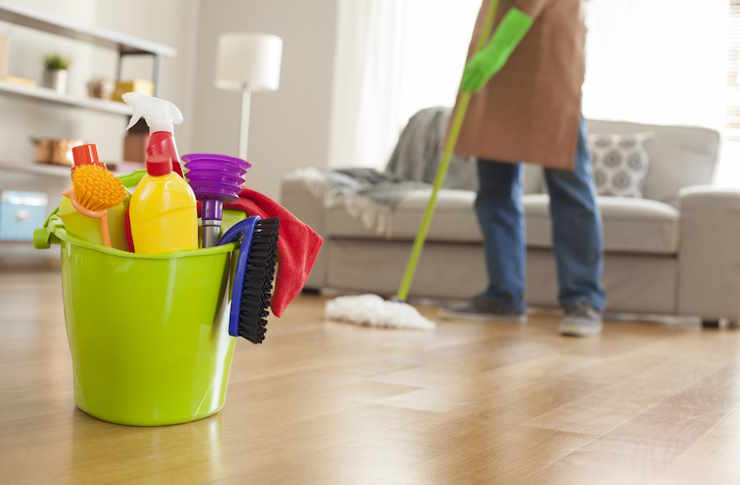Self-twisting Water Rotating Mop
Cleaning floors has long been one of the most physically demanding household chores, often requiring significant bending, scrubbing, and wringing that can cause back pain and fatigue. Traditional mops with separate buckets and manual wringing processes are increasingly being replaced by innovative solutions that streamline the cleaning process. The self-twisting water rotating mop represents a significant advancement in floor cleaning technology, combining efficiency with ergonomic design to transform how we maintain our living spaces. These modern cleaning tools feature hands-free wringing mechanisms, microfiber pads that attract dust and debris, and rotating heads that access hard-to-reach areas.

Top 5 Reasons to Switch to a Self-Twisting Rotating Mop
The transition from traditional cotton string mops to self-twisting rotating models offers numerous advantages for everyday cleaning routines. First, these innovative mops eliminate direct contact with dirty water through their built-in wringing mechanisms, promoting better hygiene during cleaning tasks. Second, the rotating head design allows for more efficient cleaning around furniture legs, into corners, and along baseboards that typically collect dust. Third, many models feature reusable microfiber pads that can be machine-washed hundreds of times, making them more economical and environmentally friendly than disposable alternatives. Fourth, the lightweight design reduces physical strain during extended cleaning sessions. Finally, the self-wringing feature ensures consistent moisture levels, preventing excess water damage to sensitive flooring materials like hardwood or laminate.
How a Rotating Mop Saves Time and Effort in Cleaning
Traditional mopping often involves a multi-step process of dipping, manual wringing, mopping, and repeating—creating a time-consuming and physically demanding chore. Self-twisting rotating mops streamline this workflow significantly. The hands-free wringing mechanism typically works through a foot pedal or spinning bucket system that removes excess water with minimal physical exertion. This design eliminates the need to bend over repeatedly or use hand strength to wring out the mop head. Additionally, the rotating head covers more surface area with each pass, reducing the number of strokes needed to clean a room. Many models also feature dual-action cleaning, with one side designed for wet mopping and the other for dry dusting, eliminating the need for separate tools. Users frequently report cutting their floor cleaning time by 30-50% after switching to these advanced mop systems.
Why Self-Wringing Mops Are a Must-Have for Modern Homes
Today’s busy households demand cleaning solutions that offer efficiency without sacrificing effectiveness. Self-wringing rotating mops address this need through thoughtful design features that align with contemporary living requirements. The hands-free wringing system reduces back strain and keeps hands clean throughout the cleaning process—a particular benefit for those with skin sensitivities or allergies to cleaning chemicals. Many models are designed with space-saving storage in mind, with collapsible handles and compact bucket systems that fit easily in smaller closets or utility spaces. For homes with multiple flooring types, these versatile tools can transition from ceramic tile to hardwood to laminate without changing equipment. Additionally, the controlled moisture application makes these mops suitable for quick cleanup of spills without oversaturating floors, extending the lifespan of water-sensitive flooring materials.
Advanced Features of Modern Rotating Mop Systems
Self-twisting rotating mops have evolved to include numerous technological improvements that enhance their performance and user experience. Many current models feature dual-chamber bucket systems that separate clean and dirty water, preventing the reapplication of contaminants to clean floor areas. Microfiber pad technology has advanced significantly, with specialized weaves that can capture particles as small as bacteria while still being gentle enough for delicate surfaces. Some premium models now include additional features such as spray mechanisms built into the mop handle, eliminating the need for separate buckets altogether. Ergonomic handle designs with adjustable heights accommodate users of different statures, while quick-release pad systems allow for pad changes without touching soiled materials. These advancements collectively represent a significant leap forward from traditional string mops and basic spin mops that entered the market earlier.
Comparing Popular Self-Twisting Mop Models
The market offers various self-twisting rotating mop options with different features and price points to suit various cleaning needs and budgets.
| Model | Key Features | Typical Price Range |
|---|---|---|
| O-Cedar EasyWring | Foot pedal wringing, triangular mop head, machine-washable microfiber pad | $30-45 |
| Spin & Go Pro | Stainless steel basket, dual-action wringing, extendable handle | $45-60 |
| Mopnado Deluxe | Dual spinning chambers, wheels for mobility, multiple microfiber pad types | $60-80 |
| Hurricane Spin Mop | 360° rotating head, lightweight design, splash guard | $35-50 |
| Bissell SpinWave | Powered spinning pads, spray function, rechargeable battery | $115-150 |
Prices, rates, or cost estimates mentioned in this article are based on the latest available information but may change over time. Independent research is advised before making financial decisions.
Proper Maintenance for Extended Mop Lifespan
To maximize the investment in a self-twisting rotating mop, proper maintenance is essential. Most microfiber pads require specific washing instructions to preserve their absorbency and dirt-trapping qualities. Typically, these should be washed separately from other laundry items to prevent lint transfer, with mild detergent and no fabric softeners which can coat the fibers and reduce effectiveness. The mop’s mechanical components, particularly the rotating mechanism and wringing system, benefit from occasional cleaning to remove hair, lint, or debris that may affect performance. Many manufacturers recommend drying bucket systems completely between uses to prevent mold or mildew growth, particularly in the separate chambers or moving parts. Following these maintenance guidelines can extend the useful life of a rotating mop system from months to years, providing better long-term value and consistent cleaning performance.
While traditional floor cleaning methods still have their place in certain situations, the self-twisting water rotating mop represents a significant advancement in household cleaning technology. These innovative tools combine ergonomic design with practical functionality to make floor maintenance less physically demanding and more efficient. For homes with diverse flooring materials, frequent cleaning needs, or users with physical limitations, these modern mop systems offer particular advantages that justify their place in the contemporary cleaning arsenal.




